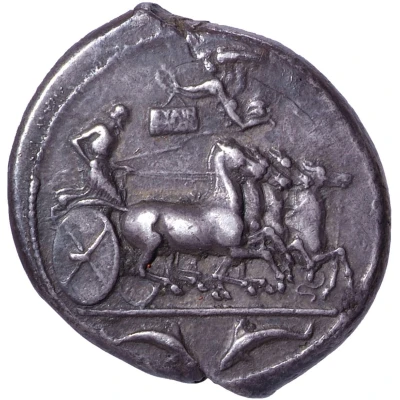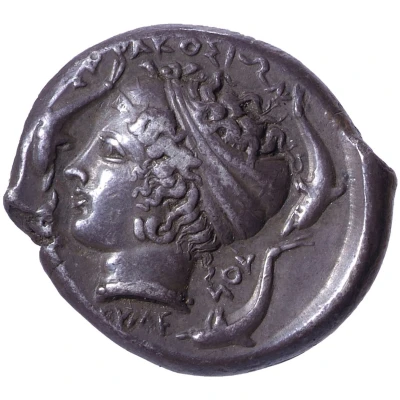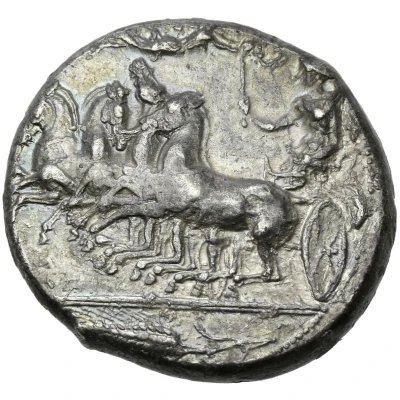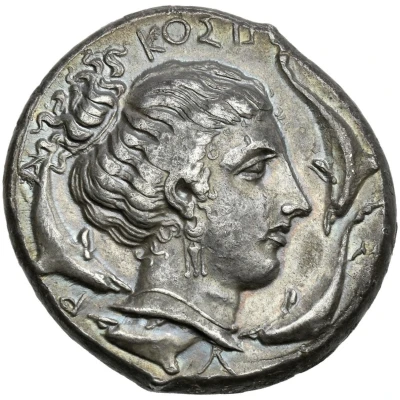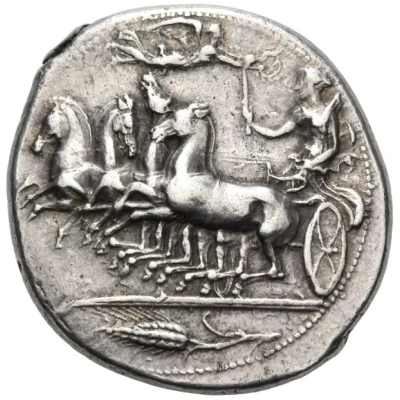
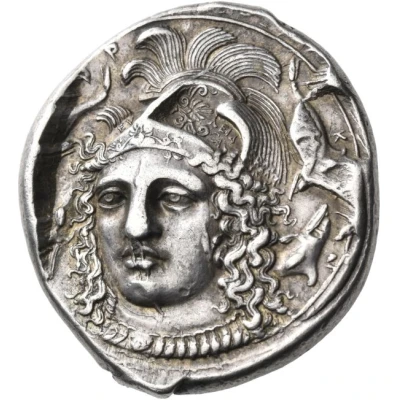

© Nomos AG
Tetradrachm 410 BC - 400 BC
| Silver | 16.56 g | 28.0 mm |
| Issuer | Syracuse (Sicily) |
|---|---|
| Period | Second Democracy (465 BC - 405 BC) |
| Type | Standard circulation coin |
| Years | 410 BC - 400 BC |
| Value | Tetradrachm (20) |
| Currency | Litra |
| Composition | Silver |
| Weight | 16.56 g |
| Diameter | 28.0 mm |
| Shape | Round (irregular) |
| Technique | Hammered |
| Orientation | Variable alignment ↺ |
| Demonetized | Yes |
| Updated | 2024-10-10 |
| Numista | N#185214 |
|---|---|
| Rarity index | 100% |
Reverse
Head of Athena facing, turned slightly to the left, wearing a triple-crested Attic helmet adorned with palmettes, a double-spiral earring and a necklace of pendant acorns with a gorgoneion at the center. Across the helmet bowl, ΕΥ-Κ/ΛΕΙΔ-Α and around, four dolphins
Script: Greek
Lettering:
ΣΥΡΑΚΟΣΙΩΝ
ΕΥ Κ
ΛΕΙΔ Α
Engraver: Eukleidas
Comment
Locker Lampson 94; Rizzo pl. XLIII, 22; Kunstfreund 120; Buceti 491.
Interesting fact
The Tetradrachm coin from Syracuse (Sicily) features a unique design on its reverse side, depicting a quadriga, or a chariot pulled by four horses. This design was a symbol of the city's wealth and power, as well as its strong maritime tradition. The coin's obverse side features the profile of the Greek goddess Arethusa, who was revered as the patron deity of Syracuse. The Tetradrachm was widely used throughout the ancient Greek world and was considered a standard unit of currency for trade and commerce.
